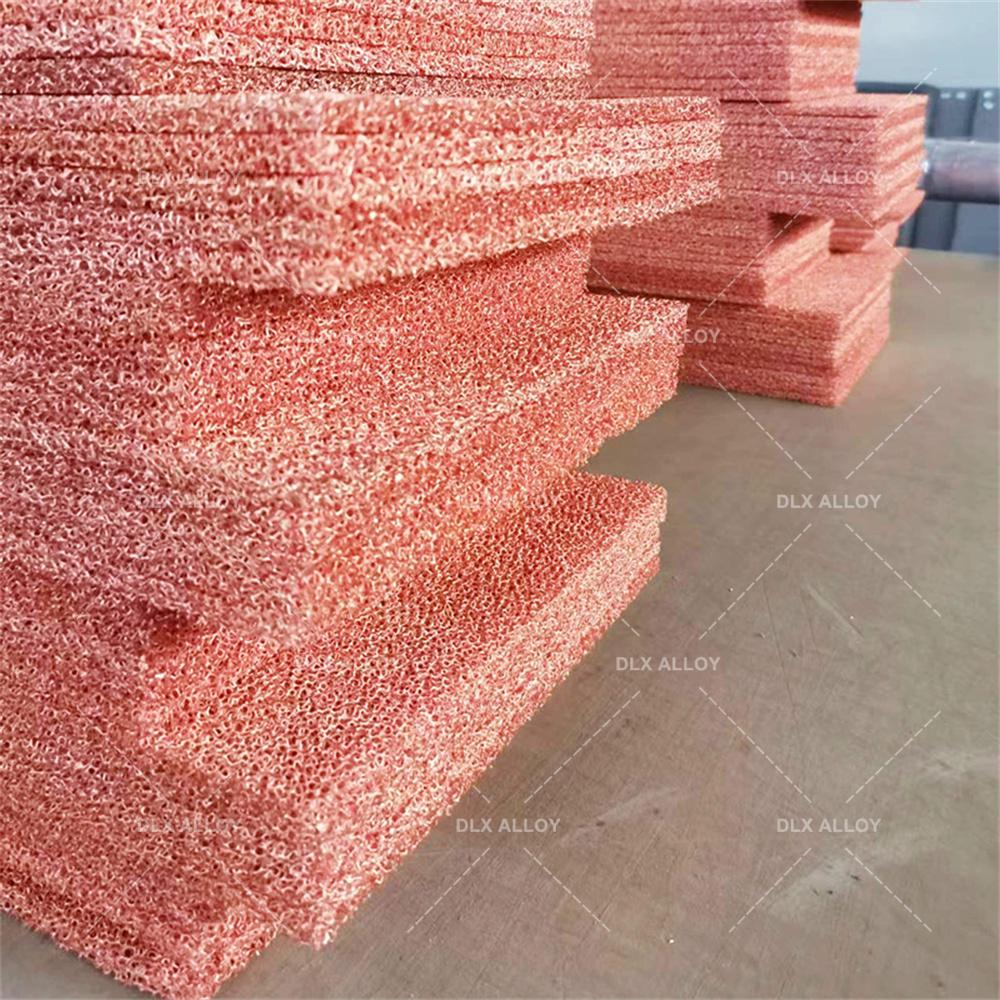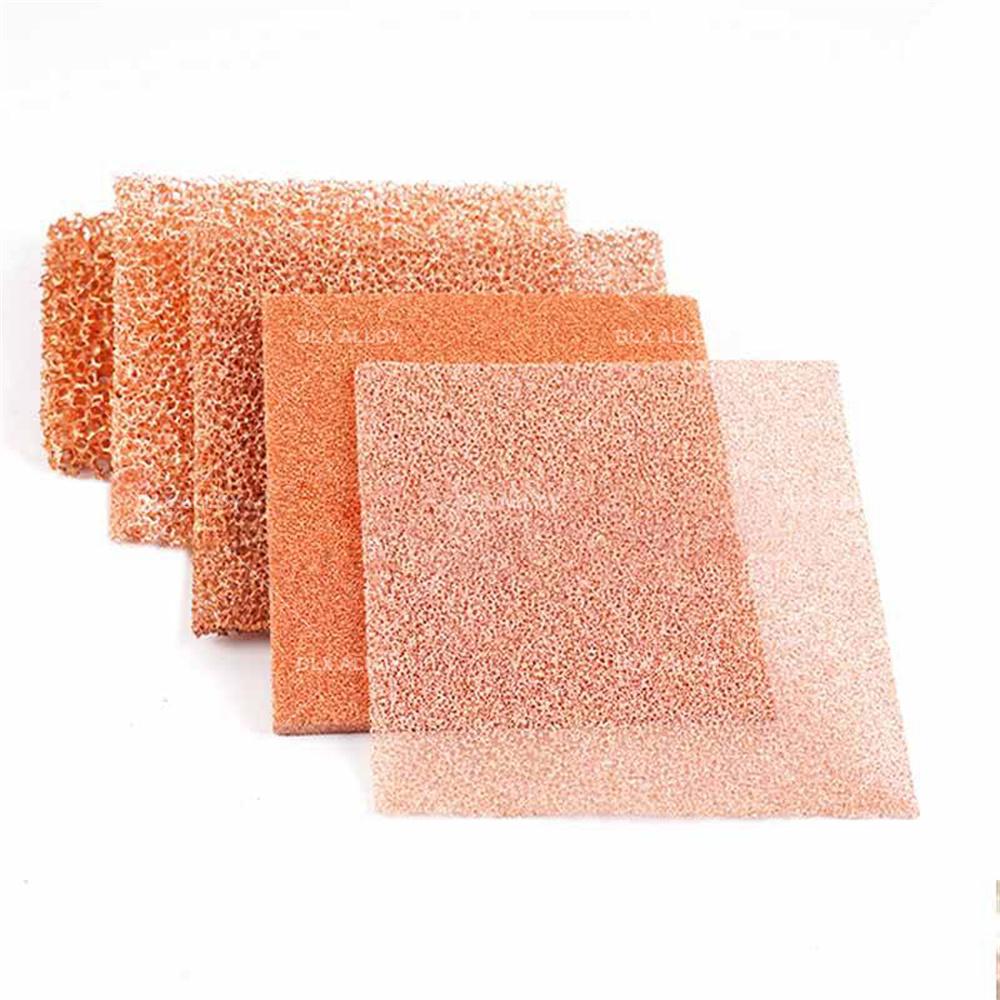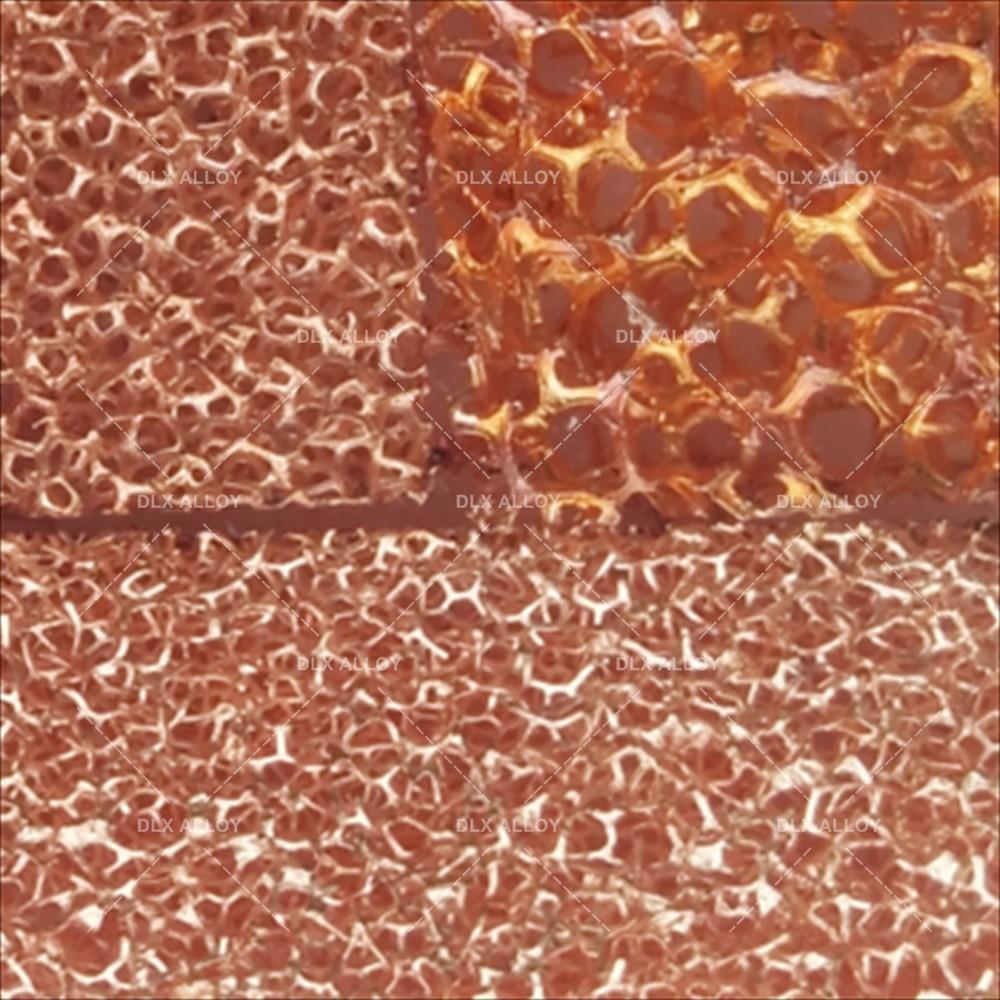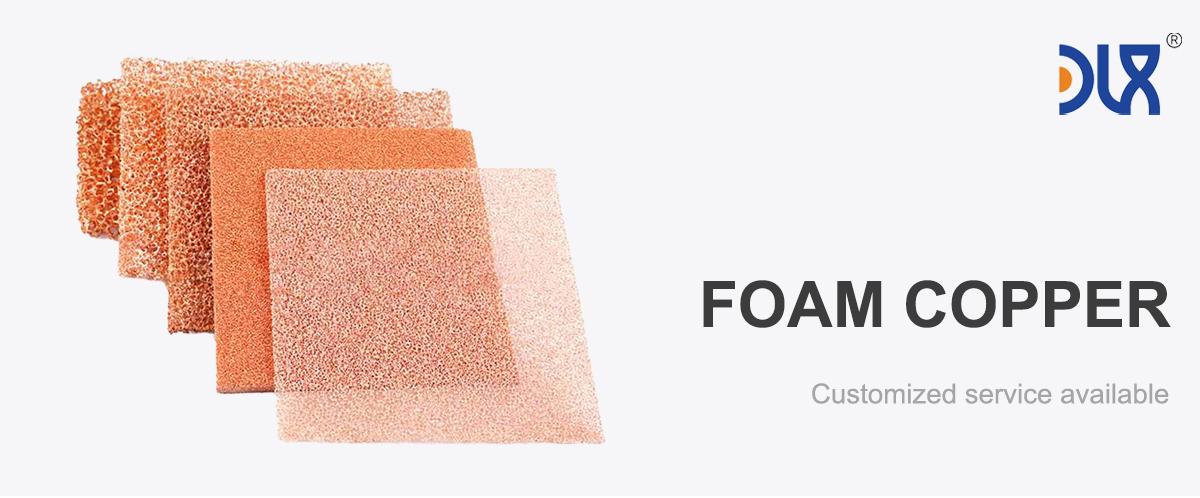
Our high-thermal conductivity Copper Foam is a game-changer for LED heat dissipation, delivering top-tier cooling performance in a lightweight package. Designed for industries like lighting and automotive, it’s transforming how LEDs stay cool and efficient. Let’s dive into what makes our copper foam special, explore its applications, unpack industry trends, and show why we’re leading the way in LED thermal management solutions.
For more details, pls directly contact us.
Our copper foam is a high-purity, porous material with a three-dimensional, open-cell structure, boasting up to 95% porosity. Weighing just 0.5-1.5 g/cm³, it’s ultra-lightweight yet durable, perfect for LED heat dissipation. Its high thermal conductivity ensures rapid heat transfer, while the porous design promotes airflow for efficient cooling. The foam’s good corrosion resistance ensures reliability in humid or high-temperature environments. We craft it using advanced electrodeposition and 3D printing, allowing us to customize pore size and density to fit your specific cooling needs. Whether you’re cooling high-power LEDs or automotive headlights, our foam delivers unmatched results.
For more details, pls directly contact us.
LEDs are the future of lighting, but they generate heat that can reduce efficiency and lifespan. Our copper foam is built to tackle that problem head-on. Its high thermal conductivity rapidly dissipates heat, keeping LEDs cool and maintaining brightness and energy efficiency. The porous structure maximizes surface area for heat transfer and airflow, ensuring consistent performance in compact designs. The lightweight design reduces system weight, a big win for automotive and portable lighting applications. Its durability ensures long-lasting cooling, even in demanding environments. This mix of high thermal conductivity, lightweight design, and reliability makes our foam a must-have for LED thermal management.
Industry Analysis: The Copper Foam Market Surge
The copper foam market is booming, driven by the global demand for energy-efficient lighting solutions. Valued at $180.5 million in 2023, it’s projected to hit $246.7 million by 2030, growing at a CAGR of 5.42%. The lighting industry is a major driver, as LEDs dominate in residential, commercial, and automotive applications. Consumer electronics and aerospace are also adopting copper foam for high-performance LED cooling. The rise of smart cities and IoT-driven lighting systems is fueling demand for compact, efficient thermal management materials.
Sustainability is a key force in this market. Regulations and consumer demand are pushing industries toward recyclable materials and eco-friendly production. Our copper foam fits perfectly—it’s fully recyclable and made with energy-efficient processes. Innovations like nanostructured foams and 3D printing are opening new possibilities, allowing us to create tailored cooling structures for specific LED applications. As industries prioritize efficiency, durability, and sustainability, our copper foam is poised to lead the LED thermal management market.
Applications: Where Our Copper Foam Shines
Our high-thermal conductivity copper foam is a versatile material, delivering results across a range of LED heat dissipation applications:
LED Lighting Fixtures: It keeps residential and commercial LEDs cool, ensuring brightness and longevity.
Automotive Headlights: The foam dissipates heat in high-power LED headlights, improving performance and safety.
Display Panels: It cools LEDs in TVs, monitors, and digital signage, maintaining image quality.
Aerospace Lighting: Lightweight and durable, it supports cooling in aircraft and satellite lighting systems.
Smart City Systems: Our foam ensures reliable cooling in IoT-driven streetlights and smart infrastructure.
Portable Electronics: It cools LEDs in projectors and handheld devices, enhancing portability and efficiency.
Industry Trends: What’s Driving Copper Foam Forward
The copper foam market is moving fast, and we’re staying ahead of the curve. Here are the trends shaping the industry:
Energy-Efficient Lighting Surge: The rise of LEDs in homes, businesses, and vehicles is driving demand for efficient cooling solutions.
Sustainability Push: Eco-friendly production and recyclable materials are must-haves, and our foam aligns with sustainable manufacturing.
Smart City Growth: The expansion of IoT-driven lighting本地
System: lighting systems is fueling demand for compact, high-performance cooling materials.
Nanostructured Foams: Advances in nanotechnology are enabling ultra-high-surface-area foams, boosting cooling efficiency.
Customization Demand: 3D printing and electroforming let us tailor foam structures for specific LED cooling needs.
Automotive Lighting Boom: The rise of LED headlights and taillights is driving demand for lightweight, efficient cooling solutions.
Why Choose Our Copper Foam?
We’re not just making copper foam—we’re crafting solutions that keep LEDs bright and efficient. Here’s why our high-thermal conductivity copper foam stands out:
Superior Thermal Conductivity: It ensures rapid heat dissipation, critical for maintaining LED performance and longevity.
High Porosity: With up to 95% porosity, our foam maximizes heat transfer and airflow, outperforming traditional materials.
Lightweight Design: At 0.5-1.5 g/cm³, it cuts weight without sacrificing durability, ideal for automotive and portable LEDs.
Customizable Structure: We tailor pore size and density to fit your specific cooling needs, ensuring optimal performance.
Eco-Friendly Edge: Fully recyclable and produced with sustainable methods, our foam aligns with green initiatives.
Expert Support: Our team partners with you from design to deployment, offering expertise to tackle your toughest cooling challenges.
Comparison Parameters Table
Parameter | Copper Foam | Aluminum Heat Sinks | Ceramic Heat Sinks | Graphite Sheets |
|---|---|---|---|---|
Thermal Conductivity | High (excellent heat dissipation) | Moderate (lower than copper) | Low (poor heat transfer) | High (but less porous) |
Porosity | High (up to 95%, customizable) | Low (limited surface area) | Low (fixed structure) | Low (non-porous) |
Weight | Lightweight (0.5-1.5 g/cm³) | Lightweight (but less porous) | Heavy (denser than copper) | Moderate (heavier than copper) |
Corrosion Resistance | Good (resists moderate environments) | Moderate (prone to oxidation) | Good (but brittle) | Good (but less durable) |
Mechanical Durability | High (withstands vibrations/heat) | Moderate (prone to deformation) | Low (prone to cracking) | Low (brittle under stress) |
Fluid Flow Efficiency | High (open-cell structure) | Low (restricted flow) | Low (poor flow characteristics) | Low (non-porous) |
Recyclability | Fully recyclable | Recyclable (energy-intensive) | Limited (difficult to recycle) | Limited (complex recycling process) |
Cost-Effectiveness | Moderate (long lifespan, high performance) | Low (cheaper but less effective) | High (expensive production) | High (expensive production) |
Our copper foam outperforms other materials for LED heat dissipation. Aluminum heat sinks are lightweight but less porous, limiting airflow and cooling efficiency. Ceramic heat sinks are stable but heavy and restrict heat transfer. Graphite sheets offer good conductivity but are less versatile and heavier. Our copper foam hits the sweet spot: ultra-high porosity, lightweight design, superior thermal conductivity, and solid durability, all backed by sustainable production.
We go beyond the product itself. Our end-to-end support—from custom design consultations to integration—ensures you get the most out of our foam. Our advanced manufacturing techniques, like electrodeposition and 3D printing, deliver consistent quality and tailored solutions that competitors can’t match.
Looking to the Future
The future of high-thermal conductivity copper foam for LED cooling is bright, and we’re excited to lead the way. As LEDs dominate lighting in homes, vehicles, and smart cities, the demand for high-performance, sustainable cooling solutions will skyrocket. We’re investing heavily in R&D to push the boundaries of what our foam/can do, from nanostructured designs for ultra-efficient cooling to high-density options for large-scale LED systems. Our commitment to sustainability means we’re constantly refining our processes to reduce waste and energy use, aligning with global environmental goals.
Our high-thermal conductivity copper foam isn’t just a material—it’s a solution for brighter, more efficient LEDs. It’s lightweight, effective, and built to power the next generation of lighting systems. Ready to see how it can transform your project? Let’s talk about making it happen.
For more details, pls directly contact us.
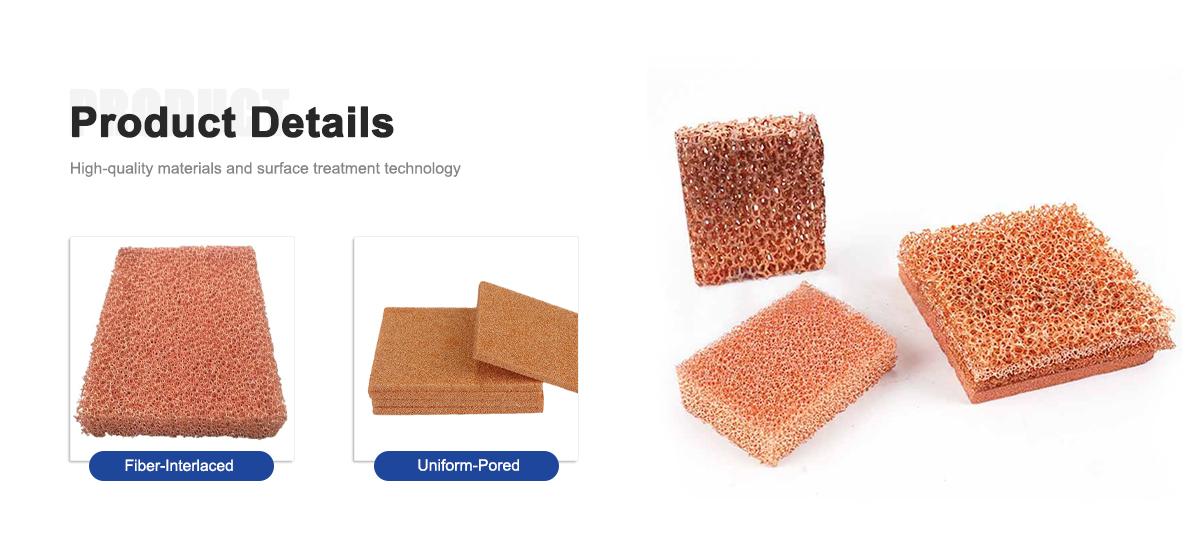
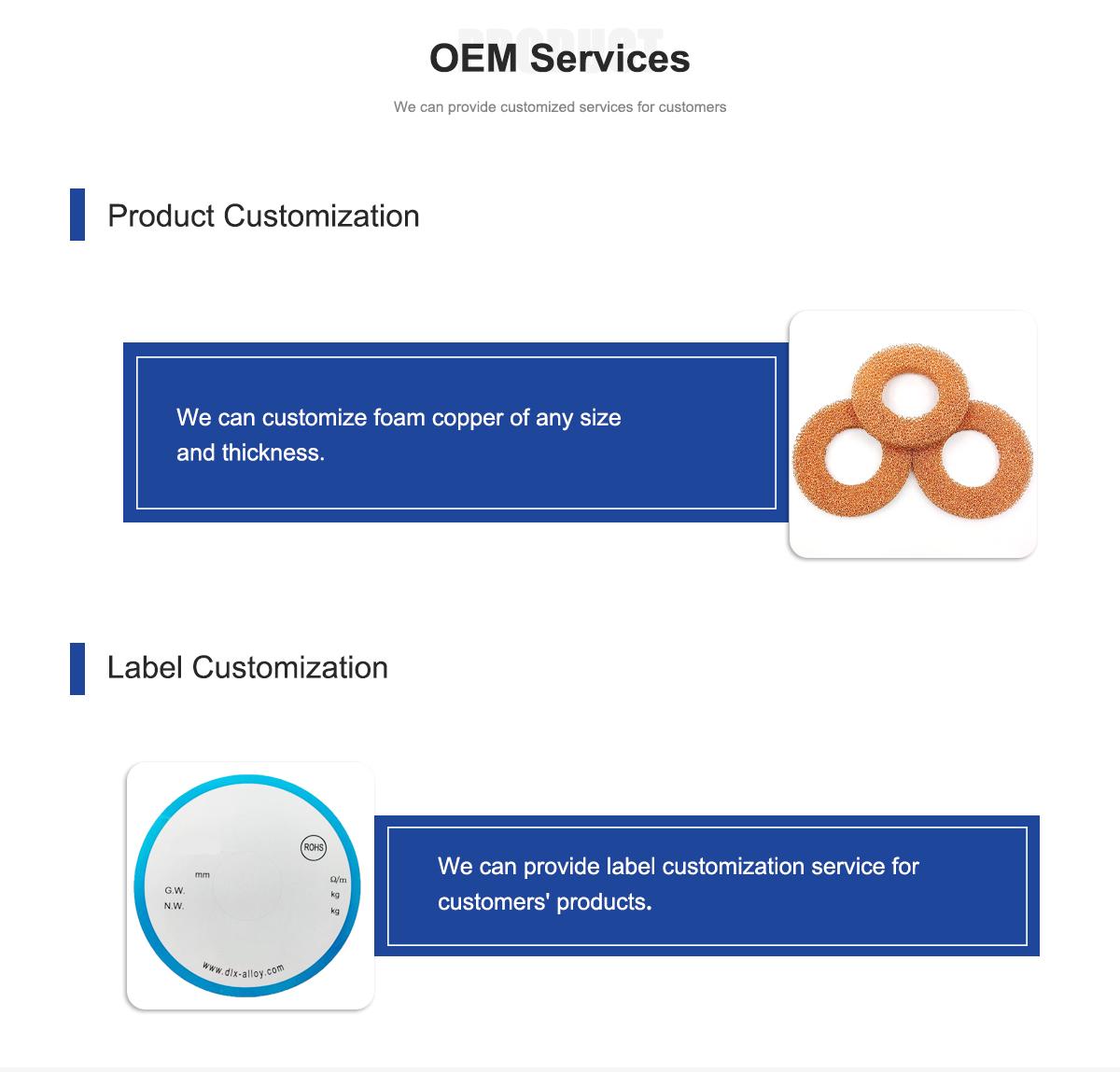
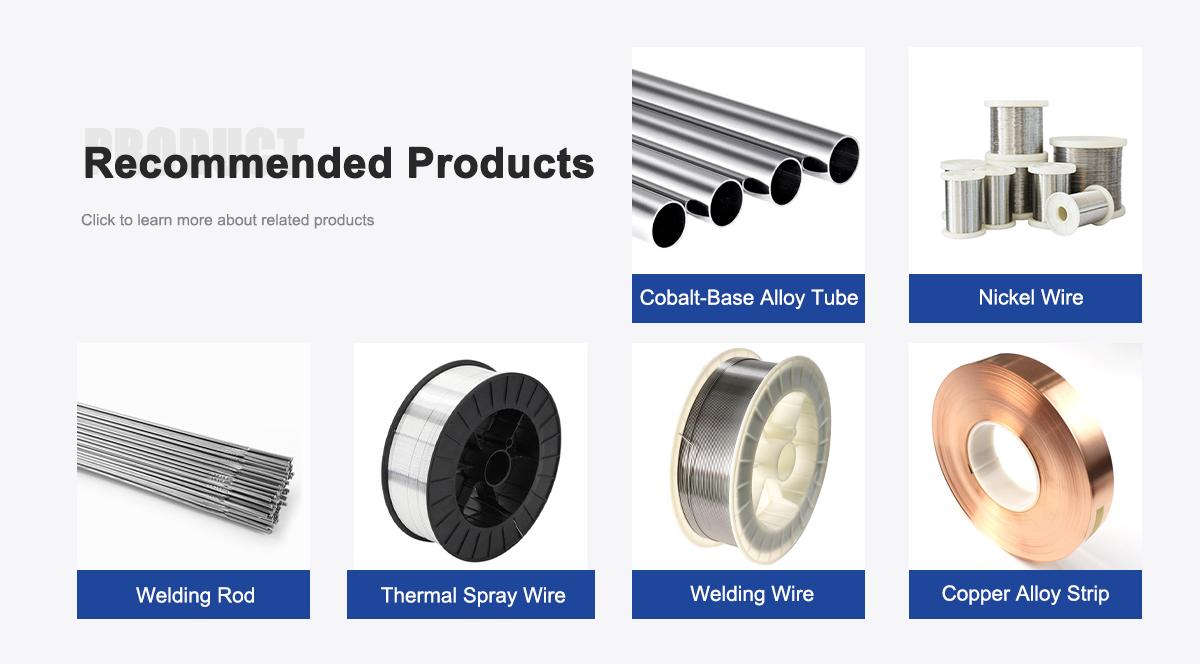
About Us:
Our 12,000㎡ factory is equipped with complete capabilities for research, production, testing, and packaging. We strictly adhere to ISO 9001 standards in our production processes, with an annual output of 1,200 tons. This ensures that we meet both quantity and quality demands. Furthermore, all products undergo rigorous simulated environment testing including high temperature, high pressure, and corrosion tests before being dispatched, ensuring they meet customer specifications.
For all our clients, we offer timely and multilingual after-sales support and technical consulting, helping you resolve any issues swiftly and efficiently.

Client Visits
Building Stronger Partnerships

We support all kinds of testing:


FAQs:
What is high-thermal conductivity copper foam?
It’s a lightweight, porous copper material with superior thermal conductivity, designed for LED heat dissipation.How does copper foam improve LED cooling?
Its high porosity and thermal conductivity maximize heat transfer, keeping LEDs cool and extending their lifespan.Which industries use this copper foam?
Lighting, automotive, consumer electronics, aerospace, and smart infrastructure rely on it for LED thermal management.Why is thermal conductivity critical for LEDs?
It prevents overheating, ensuring consistent performance, energy efficiency, and longer LED lifespans.What are the key applications of this copper foam?
It’s used in LED lighting fixtures, automotive headlights, display panels, aerospace lighting, and smart city systems.How does copper foam compare to other cooling materials?
It offers higher thermal conductivity, better porosity, and lighter weight than alternatives like aluminum or ceramics.What are the latest trends in copper foam for LED cooling?
Growing demand for energy-efficient lighting, nanostructured foam advancements, and sustainable production are driving growth.Is this copper foam eco-friendly?
Yes, it’s fully recyclable, supports energy-efficient LEDs, and is produced with sustainable methods.

